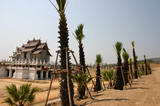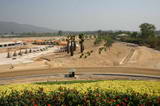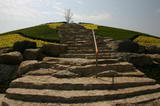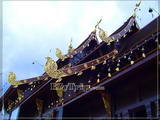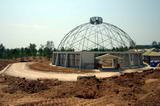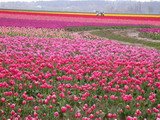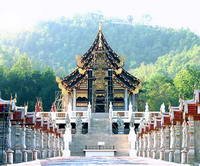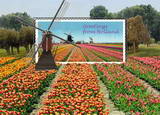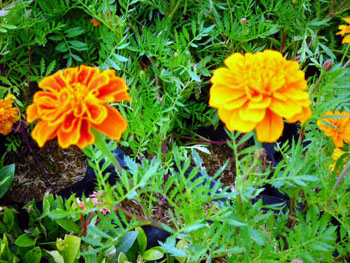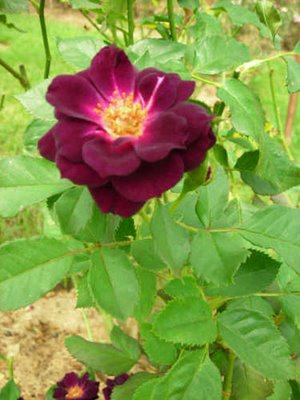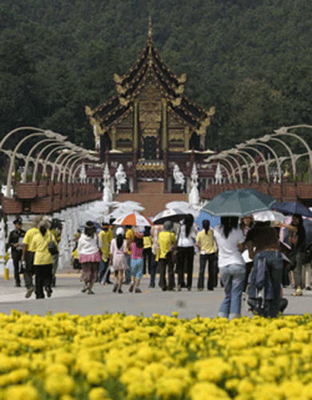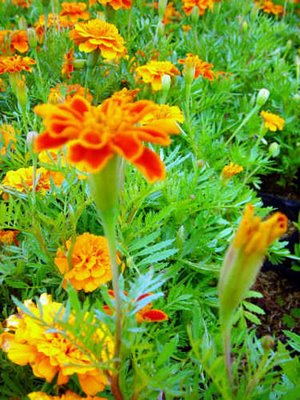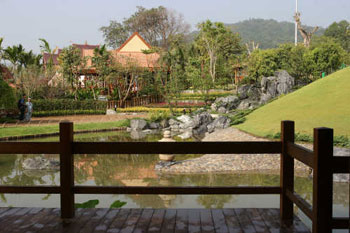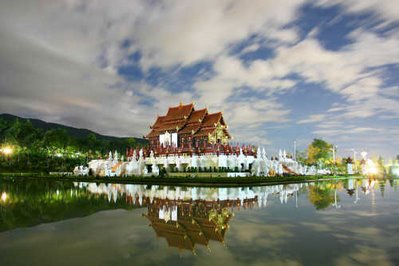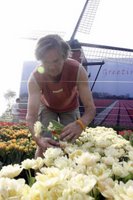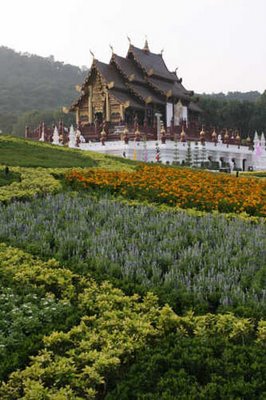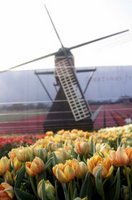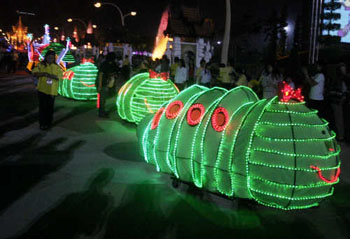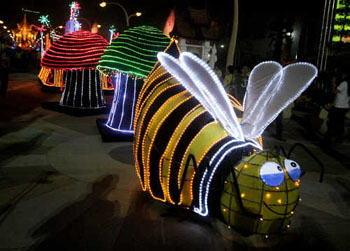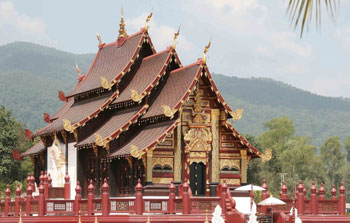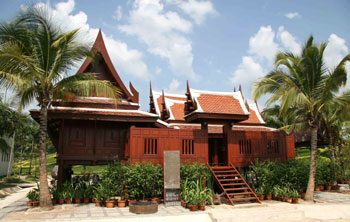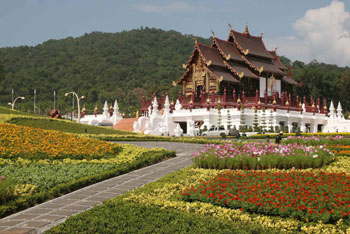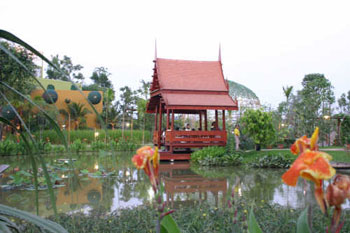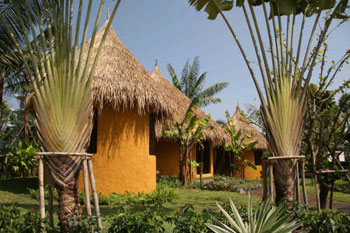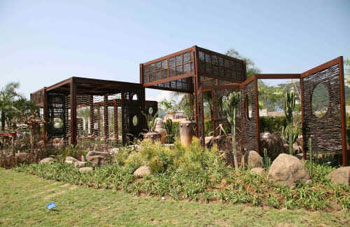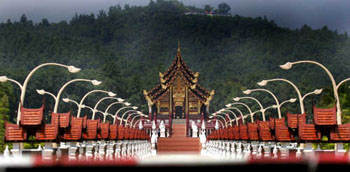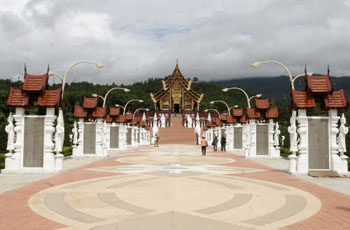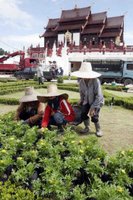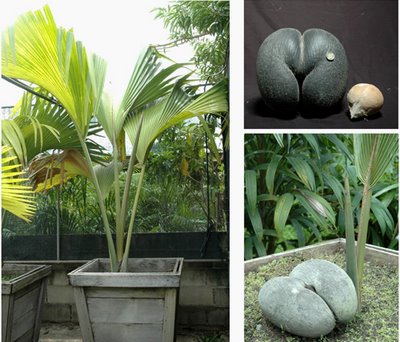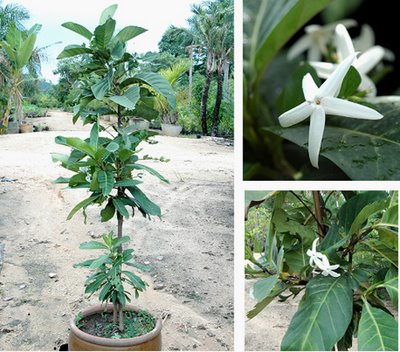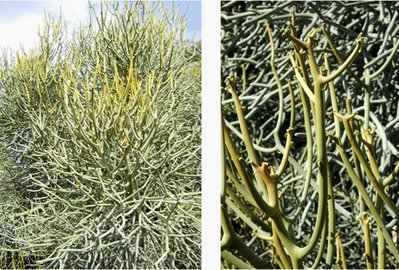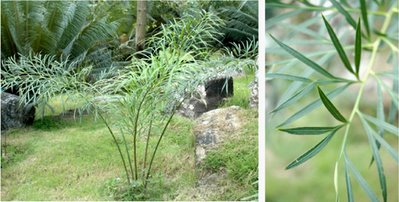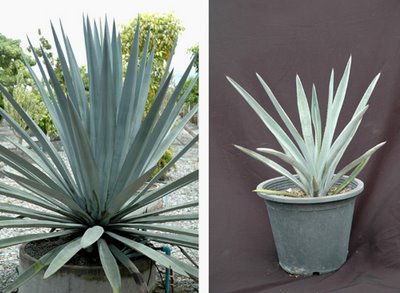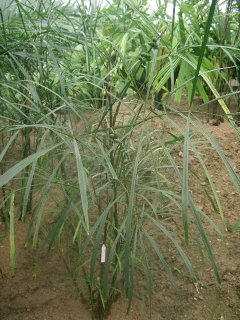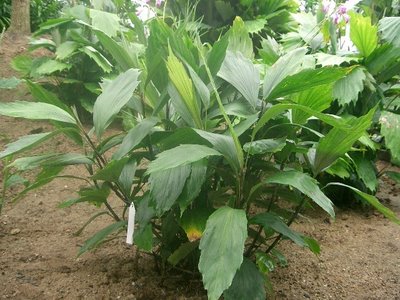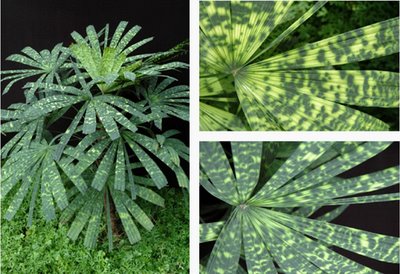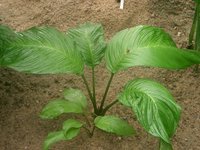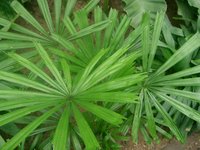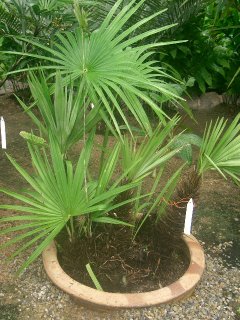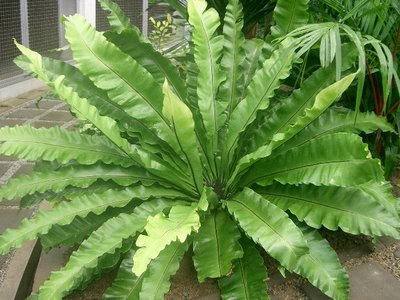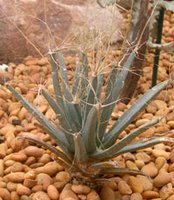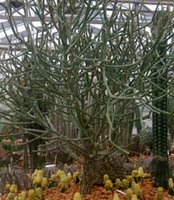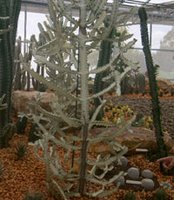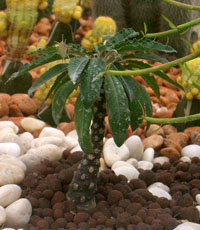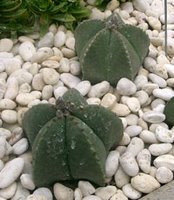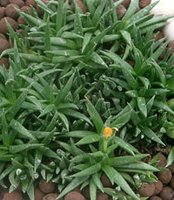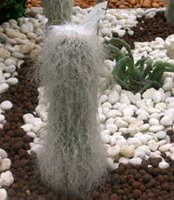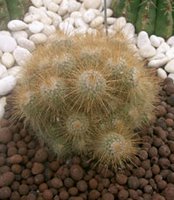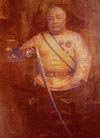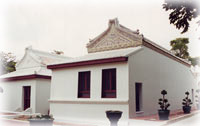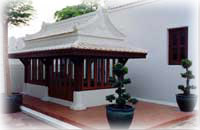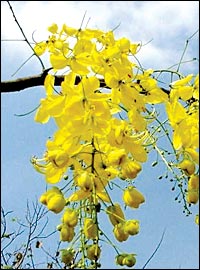 THE SIGNIFICANCE AND SYMBOLISM OF RATCHAPHRUEK FLOWERS
THE SIGNIFICANCE AND SYMBOLISM OF RATCHAPHRUEK FLOWERSThai name: Ratchaphruek
Common name: The Golden Shower
Tree Scientific name: Cassia fistula L.
The Golden Shower Tree is also known
by its less familiar common names including
“purging cassia”, “pudding pipe tree” and “Indian laburnam”.
In Thailand, ‘Ratchaphruek’ -- the Golden Shower Tree (Cassia Fistula L.), is considered to be an auspicious tree.
The dazzling yellow flowers signify two out of the three most important institutions of the Thai nation – the national religion, Buddhism, and His Majesty King Bhumibol Adulyadej who was born on Monday. Yellow is the color associated with Monday.
The shape of the pollen resembles the Thai numeral for nine; another fascinating characteristic that is symbolic of His Majesty King Bhumibol Adulyadej, Rama IX, the ninth ruler of the illustrious Chakri dynasty.
Given these many auspicious associations, the bright and cheerful yellow blossoms of the Ratchaphruek tree have been the inspiration for the name and logo of Thailand’s first International Horticultural Exposition for His Majesty the King -- Royal Flora Ratchaphruek 2006.
ROYAL FLORA RATCHAPHRUEK 2006International Horticultural Exposition for His Majesty the King
At the Royal Agricultural Research Center, Chiang Mai, Thailand
1 November 2006 – 31 January 2007
มหกรรมพืชสวนโลกเฉลิมพระเกียรติฯ ราชพฤกษ์ 2549
 นับเป็นประสบการณ์ครั้งเดียวในชีวิตกับมหกรรมพืชสวนโลกที่งดงามที่สุดงานหนึ่งของโลก
นับเป็นประสบการณ์ครั้งเดียวในชีวิตกับมหกรรมพืชสวนโลกที่งดงามที่สุดงานหนึ่งของโลก ที่คนไทยทั้งประเทศพร้อมใจกันจัดขึ้น
ที่คนไทยทั้งประเทศพร้อมใจกันจัดขึ้นเพื่อน้อมเกล้าฯ ถวายพระบาทสมเด็จพระเจ้าอยู่หัว เนื่องในโอกาสมหามงคลที่ทรงครองสิริราชสมบัติครบ 60 ปี ในปี 2549
และทรงเจริญพระชนมพรรษา 80 พรรษา ในปี 2550
มหกรรมพืชสวนโลกเฉลิมพระเกียรติฯ ราชพฤกษ์ 2549 จัดขึ้นระหว่างวันที่ 1 พฤศจิกายน 2549-31 มกราคม 2550
รวมระยะเวลา 92 วัน ของการจัดงานมหัศจรรย์แห่งพรรณไม้นานาชาติจะชูช่อ บานสะพรั่งพร้อมกันบนพื้นที่ 470
ของงานราชพฤกษ์ 2549 ซึ่งกำหนดจัดขึ้น ณ ศูนย์วิจัยเกษตรหลวง ต.แม่เหียะ อ.เมือง จ.เชียงใหม่
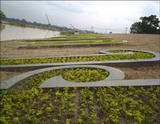
ในวันพุธที่ 1 พฤศจิกายน เวลา 17.00 น. พระบาทสมเด็จพระเจ้าอยู่หัว ทรงมีพระกรุณาโปรดเกล้าฯ ให้สมเด็จพระเทพ
รัตนราชสุดาฯ สยามบรมราชกุมารี เสด็จพระราชดำเนินทรงเปิดงานมหกรรมพืชสวนโลก เฉลิมพระเกียรติฯ 2549 ณ บริเวณ
อาคารหอคำหลวง ศูนย์วิจัยเกษตรหลวง ต.แม่เหี้ยะ อ.เมือง จ.เชียงใหม่โอกาสนี้กระทรวงเกษตรและสหกรณ์เชิญแขกผู้มีเกียรติทั้งในและต่างประเทศ
 รวมทั้งคณะทูตานุทูตในประเทศไทย ตลอดจน
รวมทั้งคณะทูตานุทูตในประเทศไทย ตลอดจนคณะรัฐมนตรี เข้าร่วมรับเสด็จในพิธีดังกล่าว ขณะเดียวกันสามารถติดตามรายละเอียดของงาน ได้ที่เวบไซต์
http://www.royalfloraexpo.com
